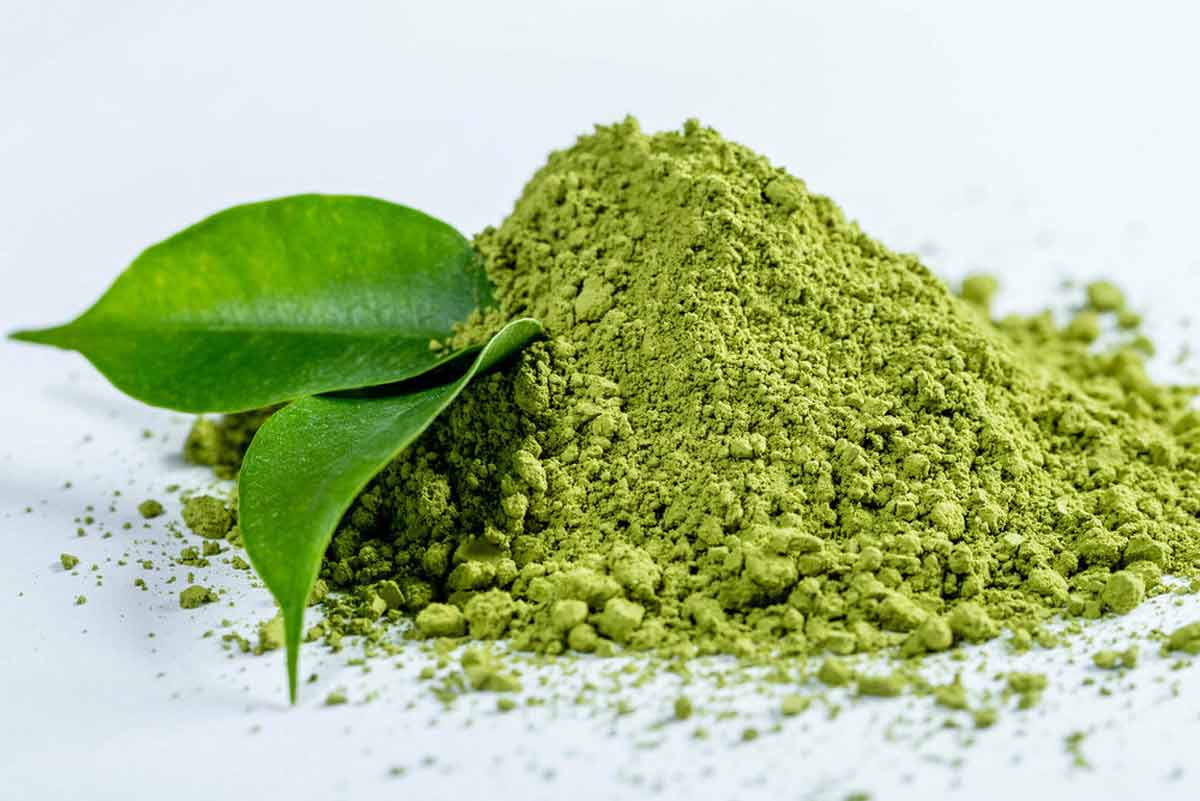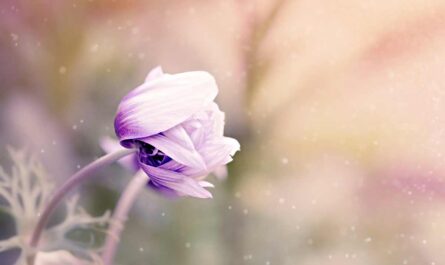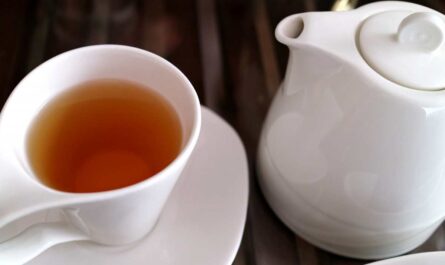What are some of the health benefits of Matcha green tea powder? Green tea leaves are pounded into a fine powder to make matcha tea. It is renowned for its healing properties and ability to treat several illnesses. Matcha is occasionally credited as being one of the primary causes of Japan’s low cancer incidence and extended life expectancy. Matcha literally means powdered green tea leaves. Nevertheless, the term “matcha” used to describe the product refers to the tencha tea leaves, which are cultivated in the shadow. When other tea leaves, like sencha, are crushed into a powder, a new product, like konacha, results.
History
Matcha was initially made by grinding dried green tea leaves from the Camellia sinensis plant during China’s Song Dynasty (960 to 1279 CE). The powdered tea leaf was combined with hot water and stirred.
Buddhist monks used matcha as part of a ceremony, and in the 12th century, they transported the tea to Japan, where it gained popularity. It was valued by everyone, from nobles to common people, and was a part of the rites in Japanese monasteries. The now-famous tea ceremony was created at this time.
Amazon Best Sellers: Best Matcha Tea
What are the various Matcha Grades?
Matcha comes in three different grades: traditional, ceremonial, and culinary.
The most popular uses for a classic grade, which is best for daily usage, are lattes and smoothies.
The majority of tea ceremonies utilize ceremonial grade. This matcha is regarded as the most expensive, highest-grade kind available, and consumers choose it for its potent flavor, deep green color, and amazing health advantages.
Blenders, desserts, and baked goods utilize culinary-grade ingredients. This grade of matcha continues to have many of the same health advantages and is the matcha family’s fastest-growing subgroup.
Health benefits of Matcha green tea powder
Matcha is made from green tea leaves, and green tea itself is known for having a number of health advantages. It is said to prevent gum disease, combat aging, improve immunity, raise bone density, and even speed up metabolism. When matcha uses all of the ground tea, these benefits are amplified. This is different from traditional green tea, which is steeped so that the beneficial components can leach into the water and then be ingested in diluted form. In terms of antioxidant content, matcha is among the top foods, even topping pomegranates and blueberries.
The amount of caffeine in matcha is half that of coffee. Theanine is an amino acid that is present together with caffeine. Depending on the individual, theanine may even promote sleep and relaxation since it has a calming impact that balances the caffeine’s potential for anxiety.
Recommended on Amazon
- Drinking tea benefits and side effects kindle books
- Quit Drinking Without Willpower
- Explore the Natural Healing Power of Herbs
- Tea Cyclopedia of the World’s Favorite Drink
- OXO Brew Tea Infuser Basket 6 oz.
- Beach Glass Electric Tea Kettle, Water Boiler & Heater
- OXO BREW Twisting Tea Ball Infuser
- Tea accessories for tea lovers
- Healthy morning energy booster drink
- Artistic Tea Cups, Saucers, and Pots on Amazon
- Best English Breakfast Tea on Amazon
- Best climate pledge friendly tea brands on Amazon
- Amazon Best Sellers: Best Matcha Tea
- Tea to boost the immune system
- Tea for arthritis pain and inflammation
- Tea for Chronic illness prevention
- Tea for minimizing diabetes risk
- Health advantages of tea
1. Pure energy
In contrast to coffee and ostensibly “healthy energy drinks,” matcha offers pure energy that won’t leave you feeling jittery or collapse once it wears off.
Matcha’s L-Theanine helps to increase blood flow, which helps to battle weariness after working out and gives you more energy to get through the day.
Matcha can thus help you get through it, whether you need energy for a demanding exercise, a huge project or presentation that is due, or just the never-ending list of to-dos that comes with being a new mom.
2. Spiritual Equilibrium
We think this one is our favorite. A matcha routine could be just what you need if you continuously struggle to strike a balance between being current and fast-paced while remaining grounded and in the moment.
Matcha soothes the mind and body and boosts the spirit. Balancing bodily and mental well-being promotes inner tranquility. You reach a greater level of consciousness as a result.
When you include a matcha ritual into your daily schedule, you’ll feel more at one with the natural world and connected to others around you.
Amazon.com: Jade Leaf Organic Matcha Green Tea Powder
3. Enhanced Focus
Matcha contains L-Theanine, which helps balance out the caffeine for long-lasting, consistent energy.
4. Mood improvement
L-relaxing Theanine’s effects uplift the mood and make you feel more in tune with yourself and your surroundings.
5. Mental Sharpness
Although EGCG stimulates activity in the area of the brain responsible for retaining information, which means hello to increased memory and cognitive function, L-Theanine also enhances brain waves to promote mental clarity, clear away brain fog, and assist in reducing stress.
6. Natural Cleanser
Matcha is a popular natural detoxifier among athletes. Chlorophyll’s vivid green hue aids in the body’s removal of heavy metals and poisons, enhancing liver function.
7. Improved Beauty
Searching for a strategy to enhance the health of your skin and hair? As well as preventing acne and reducing redness, EGCG also promotes hair development. Skin elasticity and moisture retention are supported by vitamin B2. Moreover, catechins help tissues use oxygen more effectively.
Amazon Best Sellers: Best Matcha Tea
8. Metabolic Stimulant
Matcha tea is a wonderful addition to your diet if you’re trying to lose weight! Catechins increase calorie burning by using fat as an energy source, aiding in weight loss.
And as we are all aware, losing weight only requires the mathematic equation that calories out must be higher than calories in. Use matcha tea as your pre-workout beverage to assist increase metabolism and aid in weight reduction!
9. High Immunity
Matcha is rich in essential minerals including vitamin A, vitamin B1, vitamin B2, vitamin B3, vitamin C, vitamin F, vitamin P, potassium, iron, calcium, fiber, amino acids, and more, all of which help to support a robust immune system. But it goes further than that. Although EGCG aids in the prevention of bacterial and viral infections as well as other ailments in general, matcha also aids in the improvement of lung function.
Matcha’s strong antioxidant content and EGCG have even been proven to stabilize free radicals that may harm cells and lead to chronic illness, lower levels of total and “bad” LDL cholesterol, and help prevent cancer. These effects all support the heart health benefits of Matcha green tea powder.

Cultivation
The Camellia sinensis plant begins to produce new branches in the early spring. Once the first shoots grow, a screen is placed over the plants to block light. This contributes to the plants having more theanine, which enhances the taste.
Depending on the growth conditions, the first leaves are taken around mid-May. Even though the plant’s earliest leaves are of the greatest quality, lower, more cheap grades of matcha are nevertheless produced from it.
The leaves are steamed for 15 seconds after harvesting. By doing this, the vivid green hue is maintained and oxidation is avoided. The main distinction between green tea and black tea is this. The leaves are stretched out to dry after they have been steam-cooked. The stem is then cut off once the leaves have been separated from it. To make matcha, the leftover leaves are pulverized.
Tea products on Amazon
- Turmeric Tea
- Cinnamon Tea
- Garlic Tea
- Green Tea
- White Tea
- Rosemary tea
- Chai Masala
- Hibiscus Tea
- Moringa leaf tea
- Tulsi Tea
- Chamomile Tea
- Ginger tea bags
- Earl Grey Tea
- Cranberry tea
- Echinacea tea
- Peppermint Tea
- Dragon well green tea
- Black tea
- Sencha green tea
- Teavana Peach Citrus White Tea
Green tea vs. Matcha
The antioxidant content of 1 cup of matcha tea is equivalent to 10 cups of brewed green tea. In order to obtain the antioxidants, L-theanine, B & C vitamins, and total nutritional content present in 1 cup of matcha green tea, you would need to consume 10 cups of conventional loose-leaf green tea.
As a comparison to 10 cups of loose-leaf green tea, 1 cup of matcha contains 137 times as many antioxidants, 5 times as much L-theanine, 10 times as much vitamin C, and the list goes on.
And the comparison only applies to green tea… How does it compare to coffee, white tea, and black tea? In a subsequent piece, we’ll explore that query in more detail.
Quality
Green tea in the form of quality Matcha is not inexpensive. Standard matcha costs around $20 per tin, while better grades can cost up to ten times that.
The first flush of leaves at harvest time yields the finest quality matcha. Matcha is originally harvested from the top of the Camellia sinensis plant, with the lower leaves having a lesser quality. The last harvest on the lower part of the plant yielded the lowest grade. Even harvests that occur later have better leaves on top than on the underside. Sun-dried matcha is more expensive than matcha which is produced professionally and dried in a drying chamber.
It is best to select a grade of matcha when purchasing that is appropriate for the use. While lower-grade matcha is suitable for use in cookie recipes or ice cream, higher-end matcha is best reserved for tea ceremonies and special occasions.
Amazon.com: Jade Leaf Organic Matcha Green Tea Powder
Preparation
Sift the green tea powder before making conventional matcha. For this task, use a fine sieve or specialized matcha sifter. Matcha should be sifted into a warm, dry bowl.
Soft mineral water should be heated to a temperature of 167 to 185 degrees Fahrenheit before cooling.
2.4 ounces of chilled water should be added to the bowl for every 2 teaspoons of matcha. The tea should be frothed up with a chasen, a bamboo whisk. Depending on whether you want thick or thin matcha, the water-to-match ratio changes. When you’re done mixing the matcha beverage, ice cubes can be added if you want a chilled beverage.
Tea products on Amazon
- Guayusa tea organic
- Rooibos or red bush tea
- Assamese Tea
- Honey and lemon tea
- Lemongrass Tea
- Palo Azul tea
- Ayurvedic Tea
- Ceylon green tea
- Good heart tea
- Tea for Strong Bones
- Brain safe tea
- Tea for improving mood
- Tea for kidney health
- Tea for healing indigestion
- Tea for relaxation and stress
- Unsweetened peach citrus white tea
- Blue Butterfly Pea Flower Tea
- hibiscus tea organic
- Lemongrass and Ginger Tea
- Cold and flu tea for adults
Tea Ceremony
Matcha tea is used in the Japanese tea ceremony to encourage cooperation, reverence, and purity among the participants. These qualities are supported by the warm, bitter, and sweet flavor combination. Cleaning the bowls and heating the water are the first steps in the host’s preparation of the tea for the visitors. Often, visitors take a seat quietly in a circle or around a little Japanese table. It is appropriate etiquette to bow in gratitude to the host when the bowl of the match is presented.
The tea bowl is taken with the right hand, moved to the left hand’s palm, and then rotated three times in a clockwise direction. After then, you can sip the tea. Slurp the matcha when you finish expressing how much you appreciated it. This may be observed when the soup is served, which is typical of Japanese culture. Using your right hand, wipe the bowl where your lips had touched it, then spin it counterclockwise and return it to the host.
Recipe Concepts
While Japanese people most frequently consume matcha as a tea, they also incorporate it into other dishes. To make a flavorful version of this deep-fried food, it is combined with tempura. Matcha may be used to give Castella, a sponge cake, and a green tea taste. Manj and Monaka, two azuki bean-based foods, can also be found with matcha. Matcha powder is occasionally seen in manj, a dessert that resembles snow cones but also contains dairy.
Matcha is frequently used in Western cuisine, particularly by people who wish to consume more antioxidants or speed up their metabolism. Just a few examples are smoothies, ice cream, lattes, whipped cream, baked goods, and major courses. Even matcha is sometimes blended with other teas to satisfy market demand and lower the price.
The possibilities for using matcha are only constrained by the creativity and preferences of the individual on the basis of the health benefits of Matcha green tea powder.



